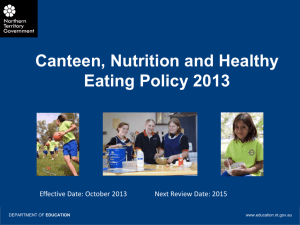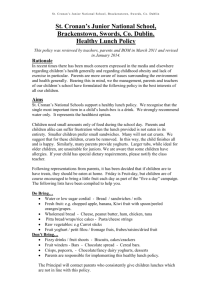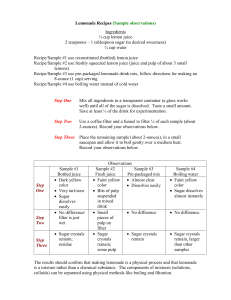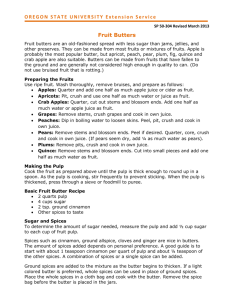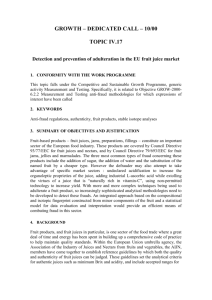What not to put in your lunchbox
advertisement
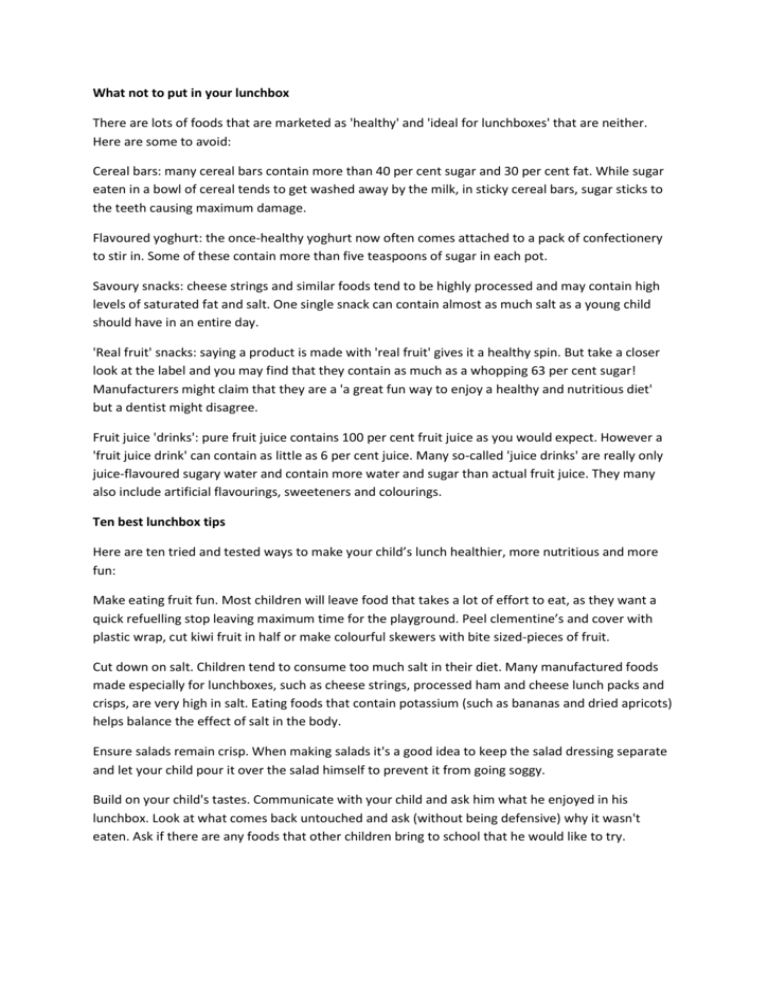
What not to put in your lunchbox There are lots of foods that are marketed as 'healthy' and 'ideal for lunchboxes' that are neither. Here are some to avoid: Cereal bars: many cereal bars contain more than 40 per cent sugar and 30 per cent fat. While sugar eaten in a bowl of cereal tends to get washed away by the milk, in sticky cereal bars, sugar sticks to the teeth causing maximum damage. Flavoured yoghurt: the once-healthy yoghurt now often comes attached to a pack of confectionery to stir in. Some of these contain more than five teaspoons of sugar in each pot. Savoury snacks: cheese strings and similar foods tend to be highly processed and may contain high levels of saturated fat and salt. One single snack can contain almost as much salt as a young child should have in an entire day. 'Real fruit' snacks: saying a product is made with 'real fruit' gives it a healthy spin. But take a closer look at the label and you may find that they contain as much as a whopping 63 per cent sugar! Manufacturers might claim that they are a 'a great fun way to enjoy a healthy and nutritious diet' but a dentist might disagree. Fruit juice 'drinks': pure fruit juice contains 100 per cent fruit juice as you would expect. However a 'fruit juice drink' can contain as little as 6 per cent juice. Many so-called 'juice drinks' are really only juice-flavoured sugary water and contain more water and sugar than actual fruit juice. They many also include artificial flavourings, sweeteners and colourings. Ten best lunchbox tips Here are ten tried and tested ways to make your child’s lunch healthier, more nutritious and more fun: Make eating fruit fun. Most children will leave food that takes a lot of effort to eat, as they want a quick refuelling stop leaving maximum time for the playground. Peel clementine’s and cover with plastic wrap, cut kiwi fruit in half or make colourful skewers with bite sized-pieces of fruit. Cut down on salt. Children tend to consume too much salt in their diet. Many manufactured foods made especially for lunchboxes, such as cheese strings, processed ham and cheese lunch packs and crisps, are very high in salt. Eating foods that contain potassium (such as bananas and dried apricots) helps balance the effect of salt in the body. Ensure salads remain crisp. When making salads it's a good idea to keep the salad dressing separate and let your child pour it over the salad himself to prevent it from going soggy. Build on your child's tastes. Communicate with your child and ask him what he enjoyed in his lunchbox. Look at what comes back untouched and ask (without being defensive) why it wasn't eaten. Ask if there are any foods that other children bring to school that he would like to try. Save time. Lunches can be prepared the night before to save time in the morning. Prepare pasta salads, sandwich fillings, fruit compotes or include something from last night’s dinner, such as soup in a flask, chicken skewers or a Spanish omelette. Keep food warm. It's a good idea to include something hot in a lunchbox, particularly when the weather is cold. A wide-mouthed mini-Thermos flask would be ideal for serving up a delicious cup of homemade or good-quality bought soup that's both warming and nutritious. Keep food cool. If you want to keep the contents of your child's lunchbox cool, try freezing a carton or plastic bottle of juice overnight. The frozen drink will help keep food cool and will have defrosted by lunchtime. Choose pure fruit juice or fruit smoothies, not fruit juice 'drinks' which tend to be high in added sugar. Freshen up. Cut-up vegetables sticks can dry out, so it’s a good idea to wrap them in some damp kitchen paper to retain moisture. Cut down on junk. Avoid too many processed foods as they tend to contain few nutrients and too much salt, sugar, additives and saturated fat. If your child likes crisps but you don’t want him to fill up by eating a whole bag, put some in a small bag or wrap some crisps in foil. Add a personal touch. Tuck a surprise like a note, stickers or joke in your child's lunchbox or hide a special treat at the bottom. Pack fun napkins, decorate lunch bags with stickers, draw a face on a banana with a marker pen or cut sandwiches into novelty shapes using cookie cutters. At the weekend it's a good idea to get your children involved in the kitchen making things like biscuits and muffins which they can then take to school the following week. During warm weather: Make sure you keep food cool by putting food in a cool bag or adding a freezer block.




